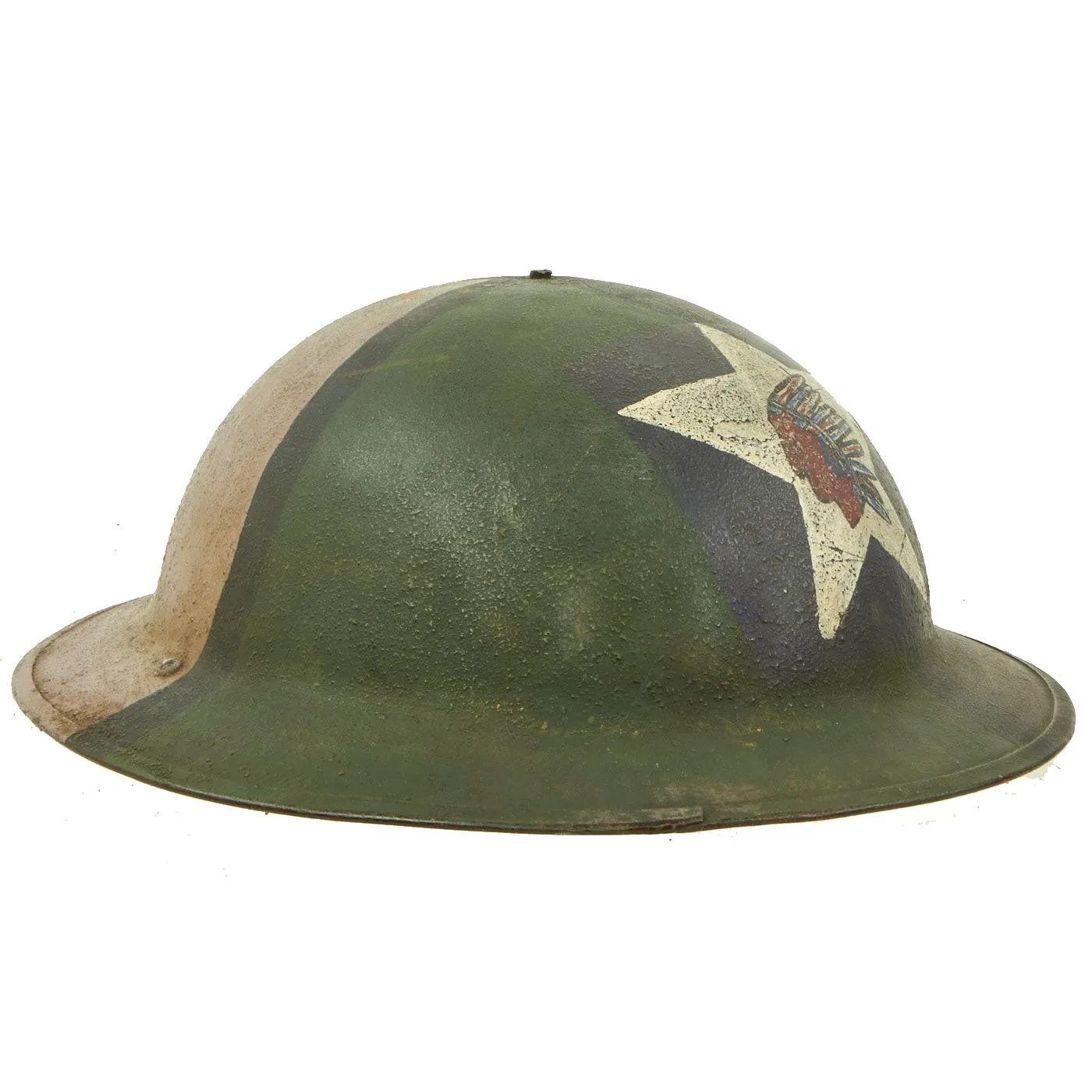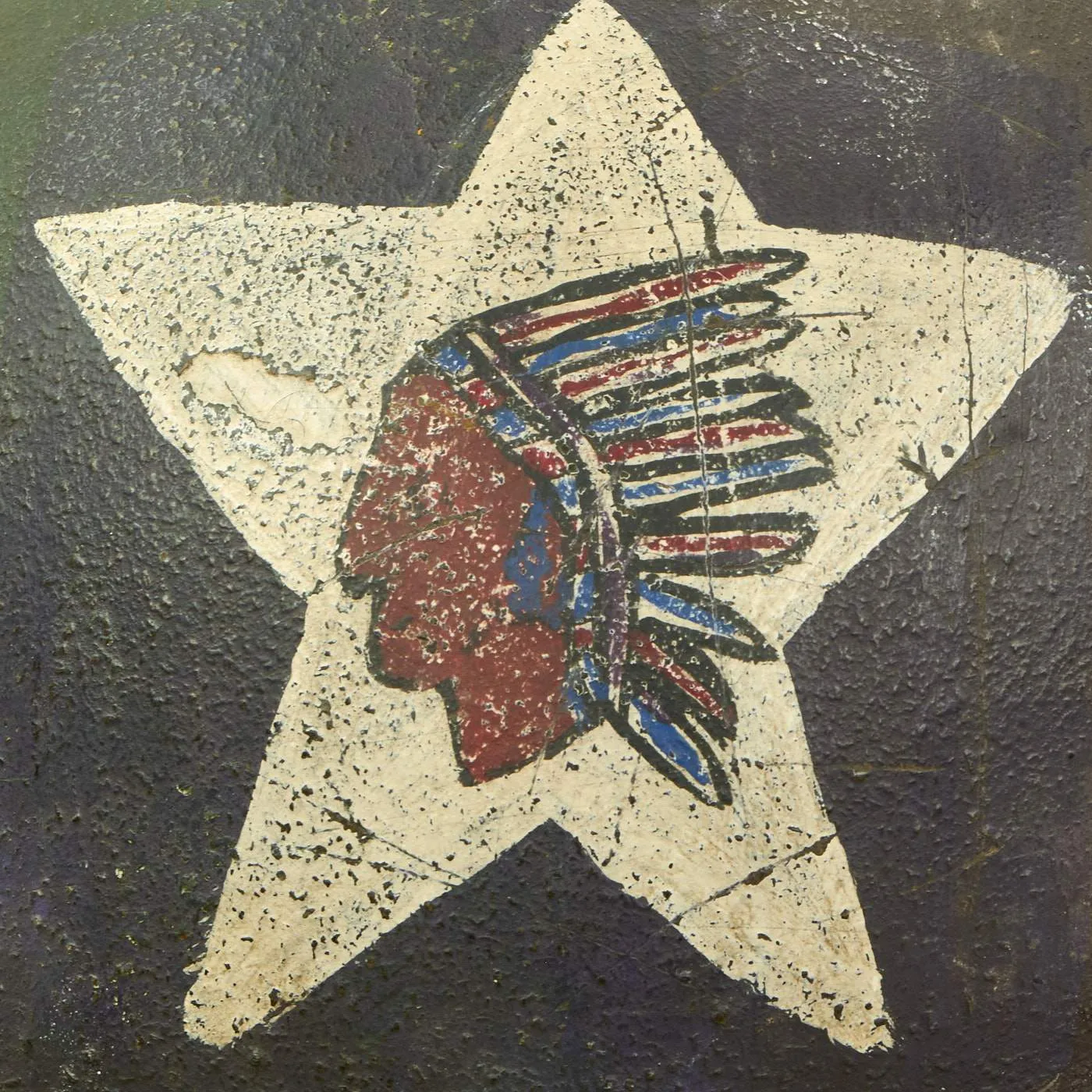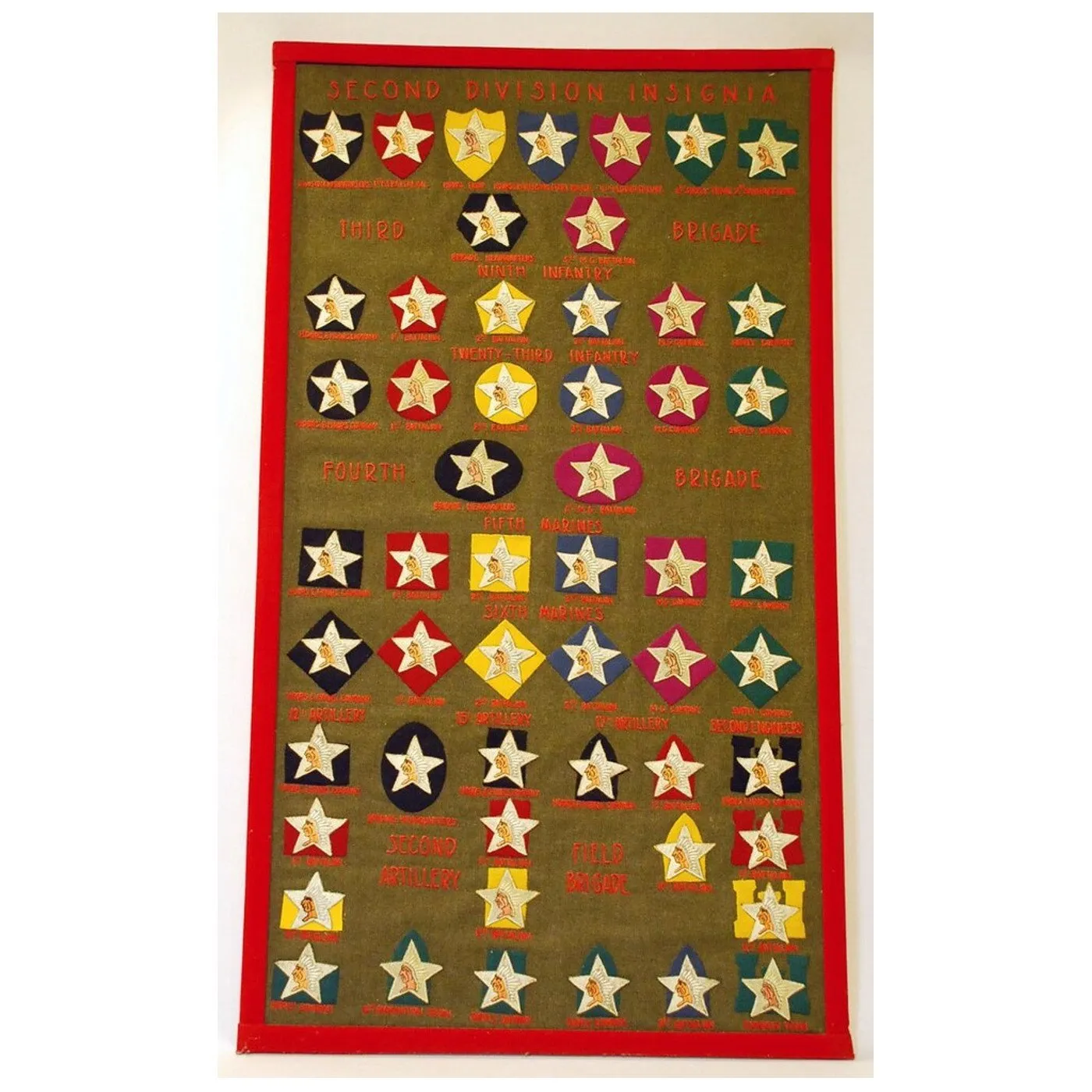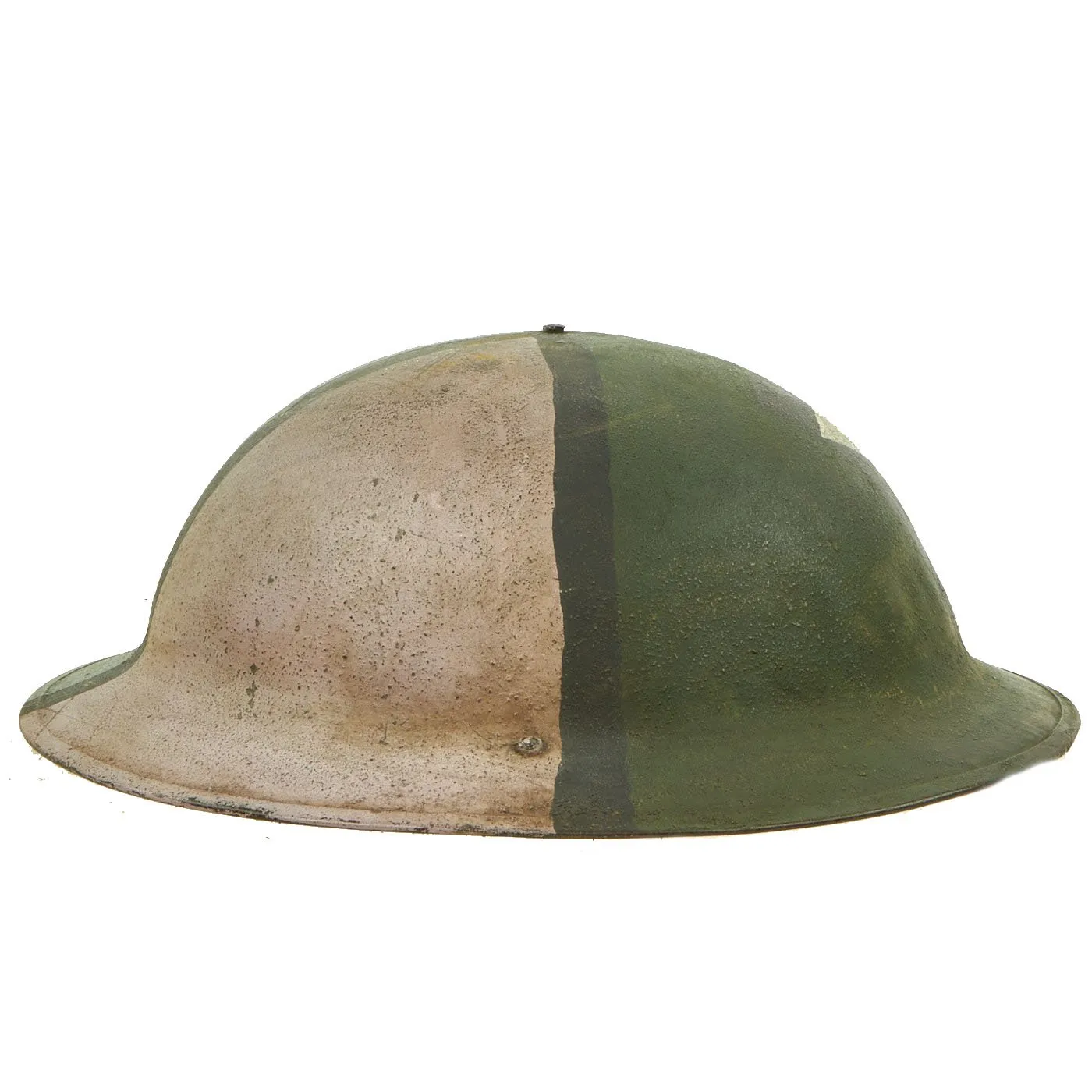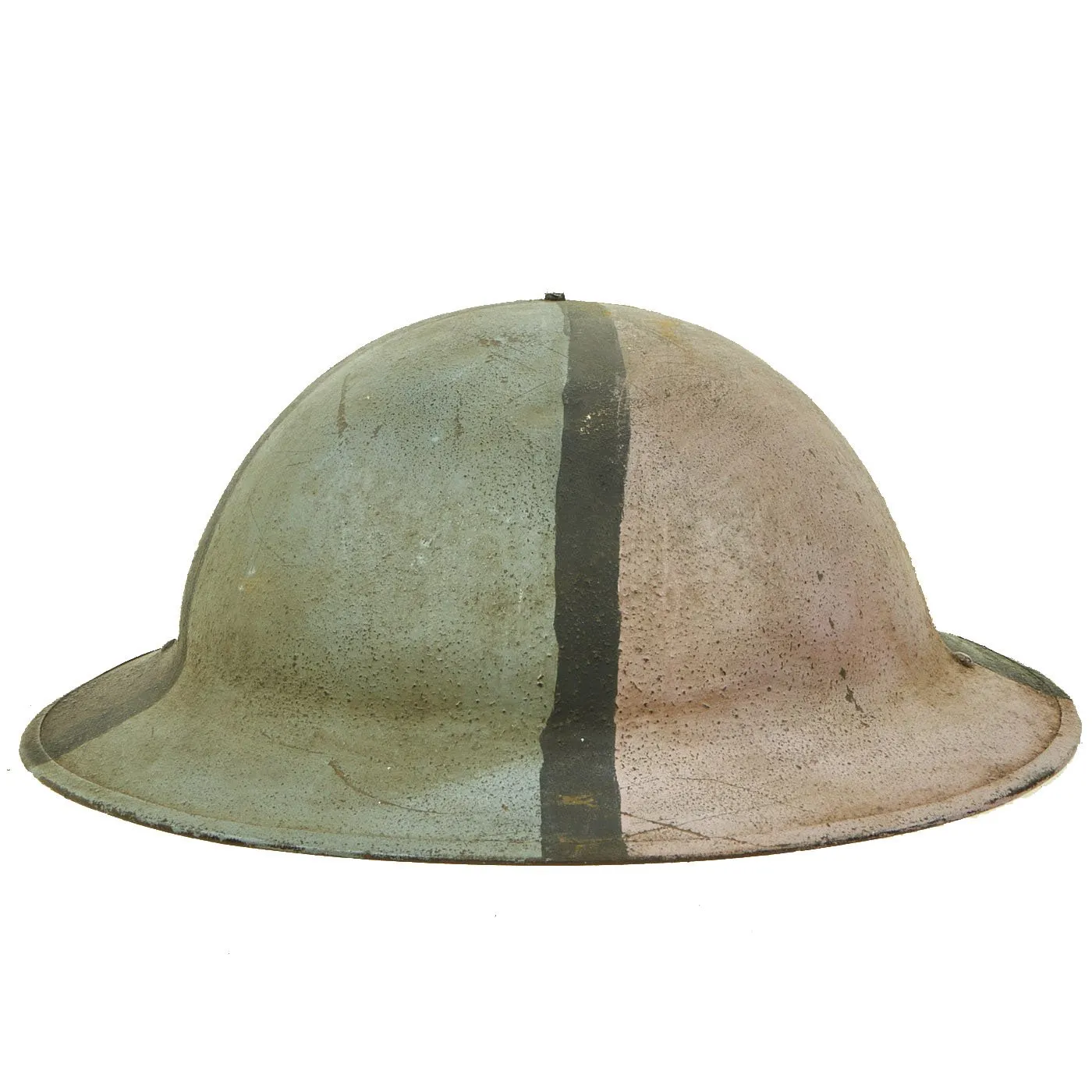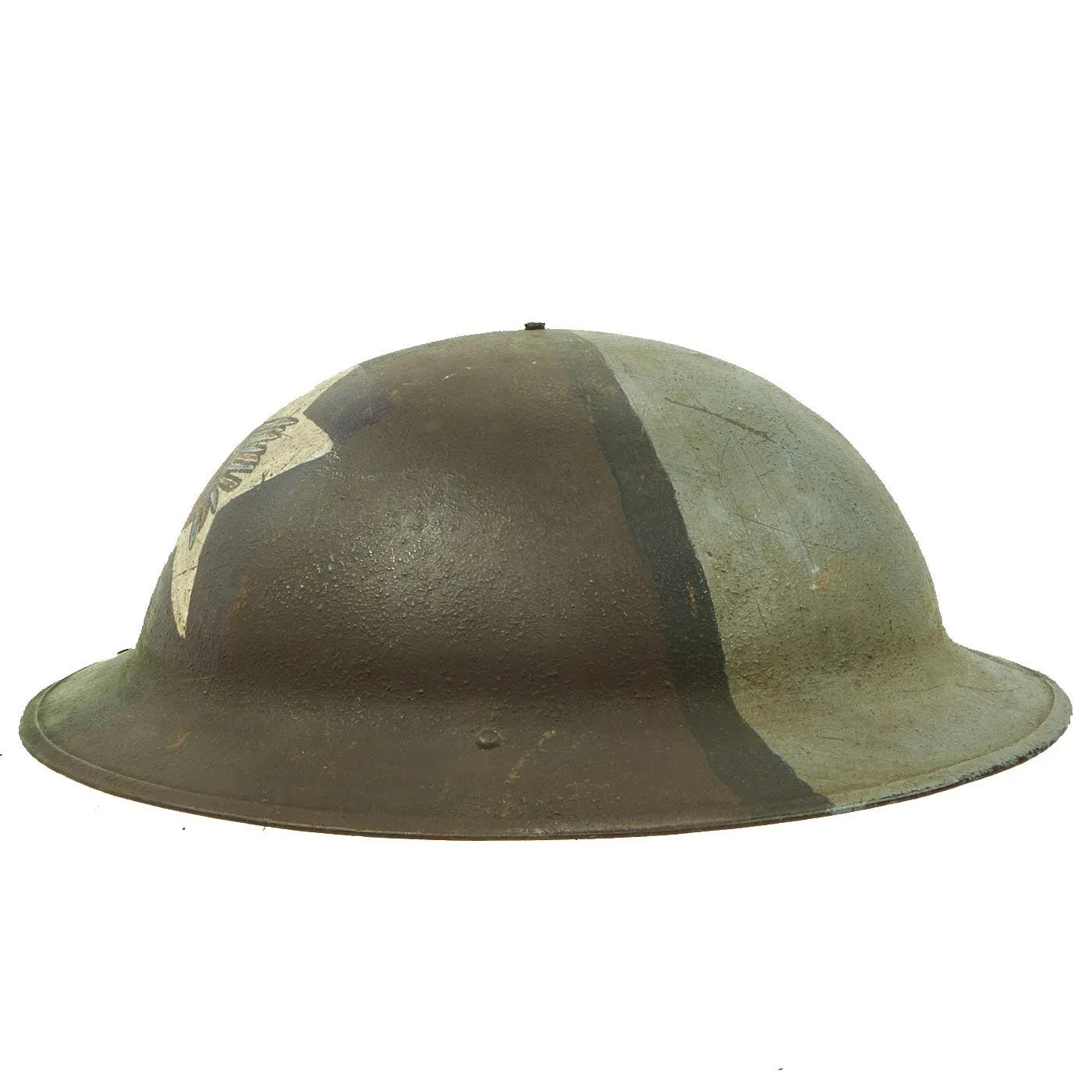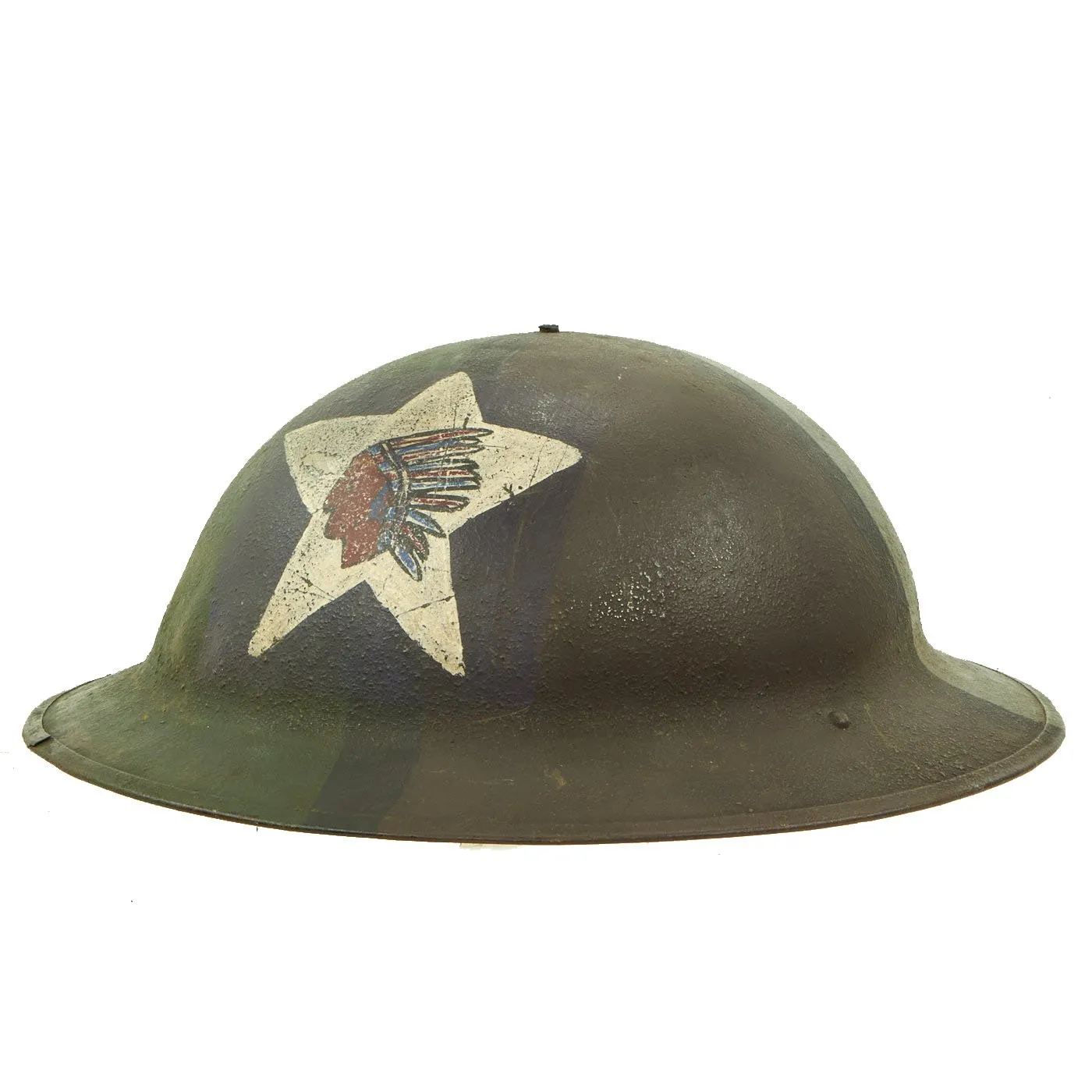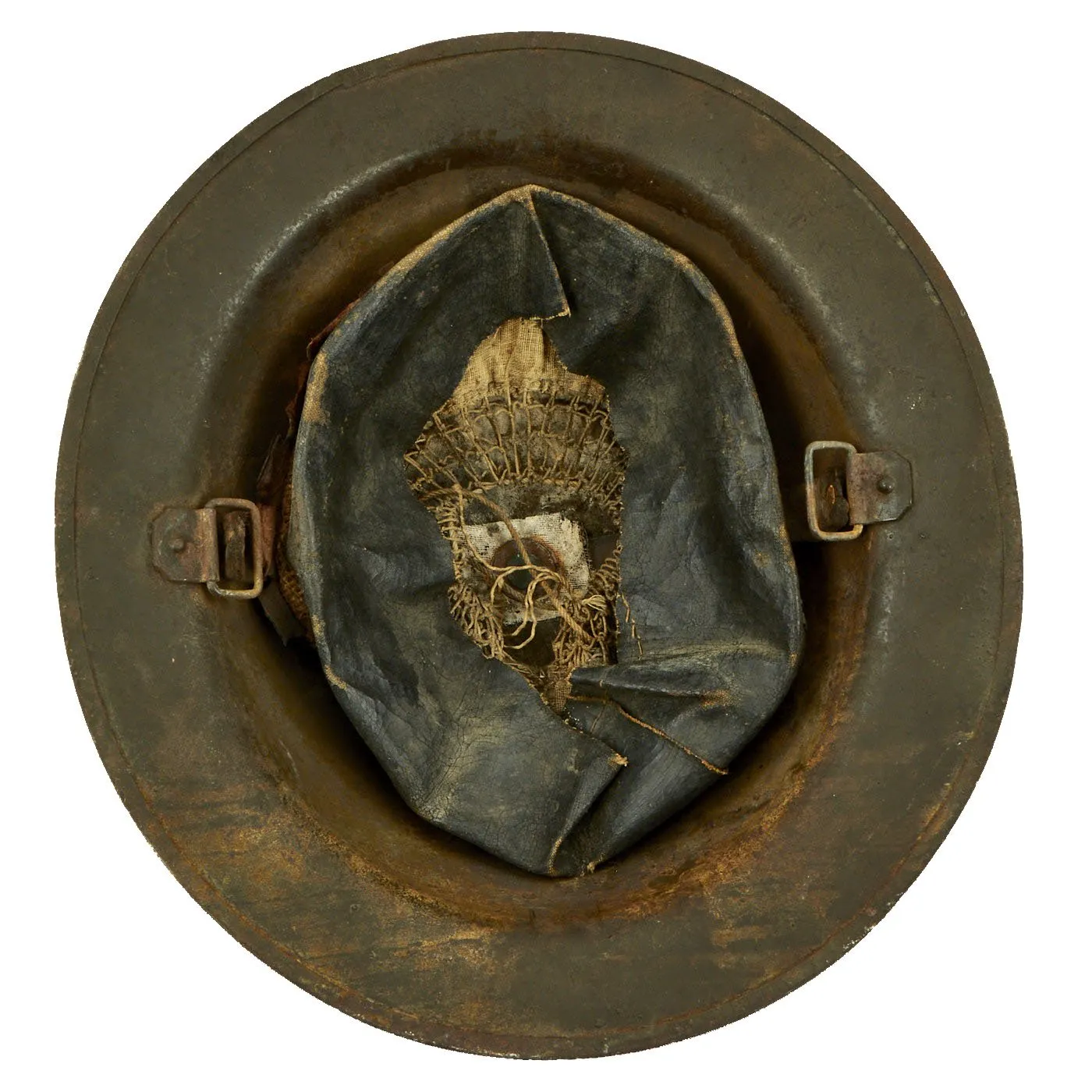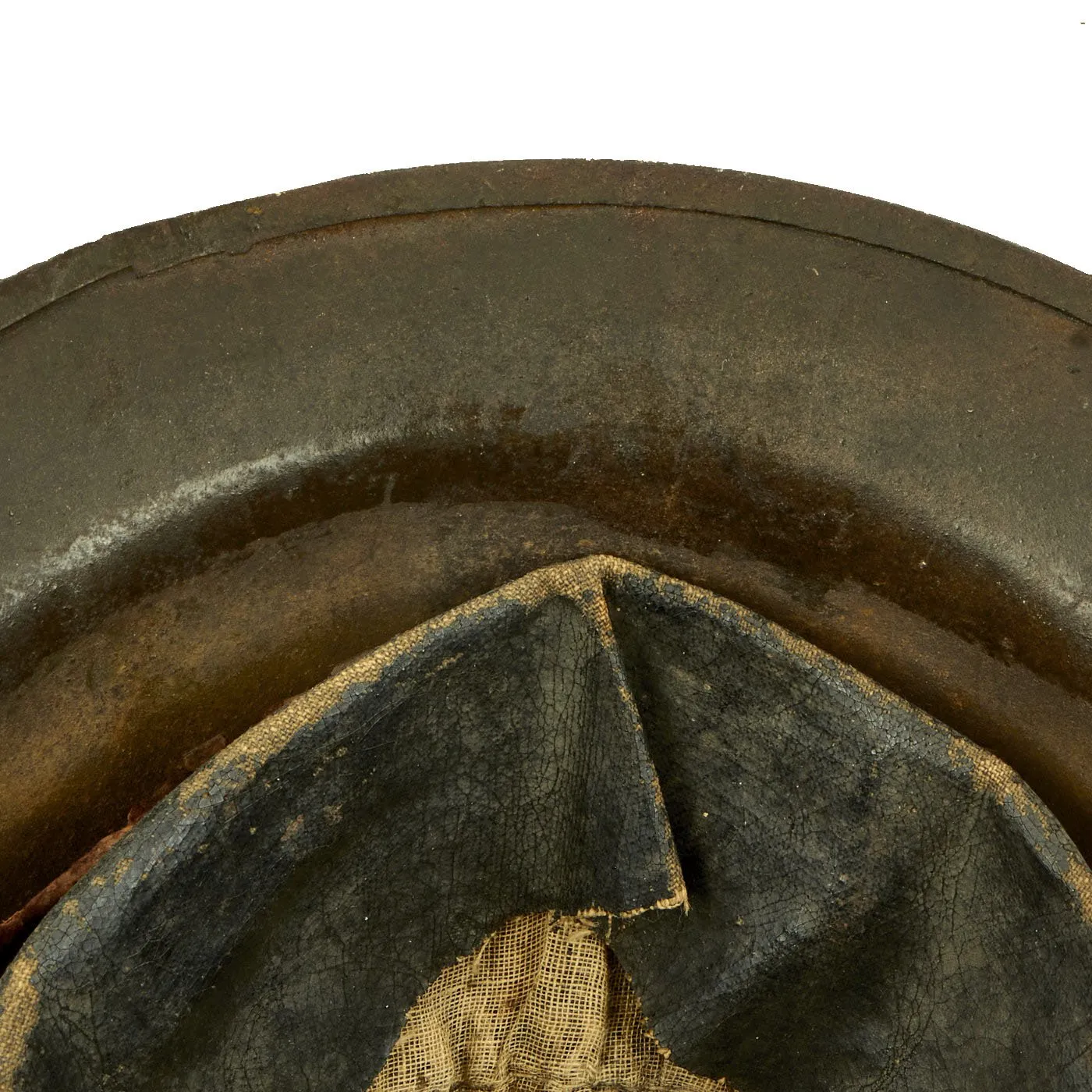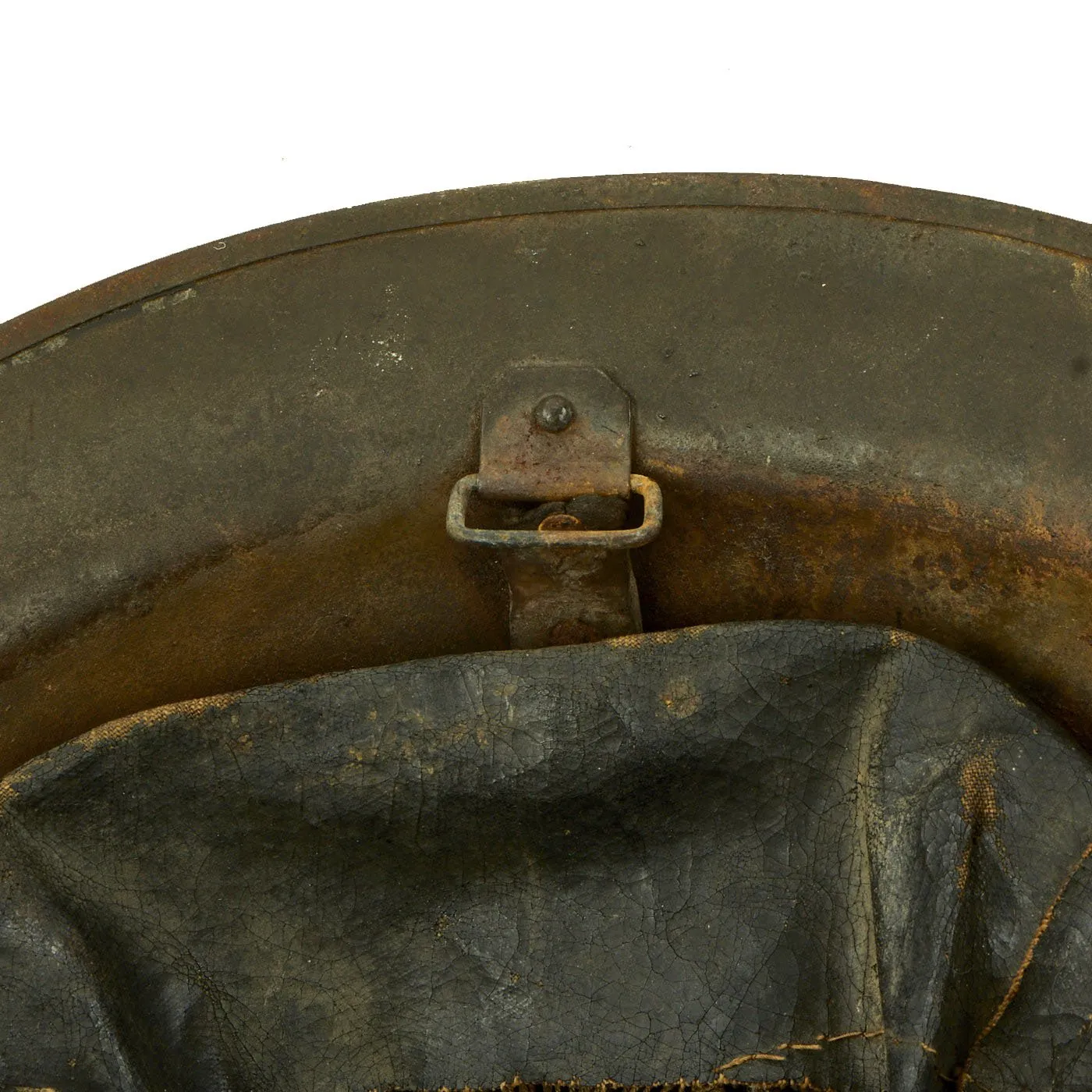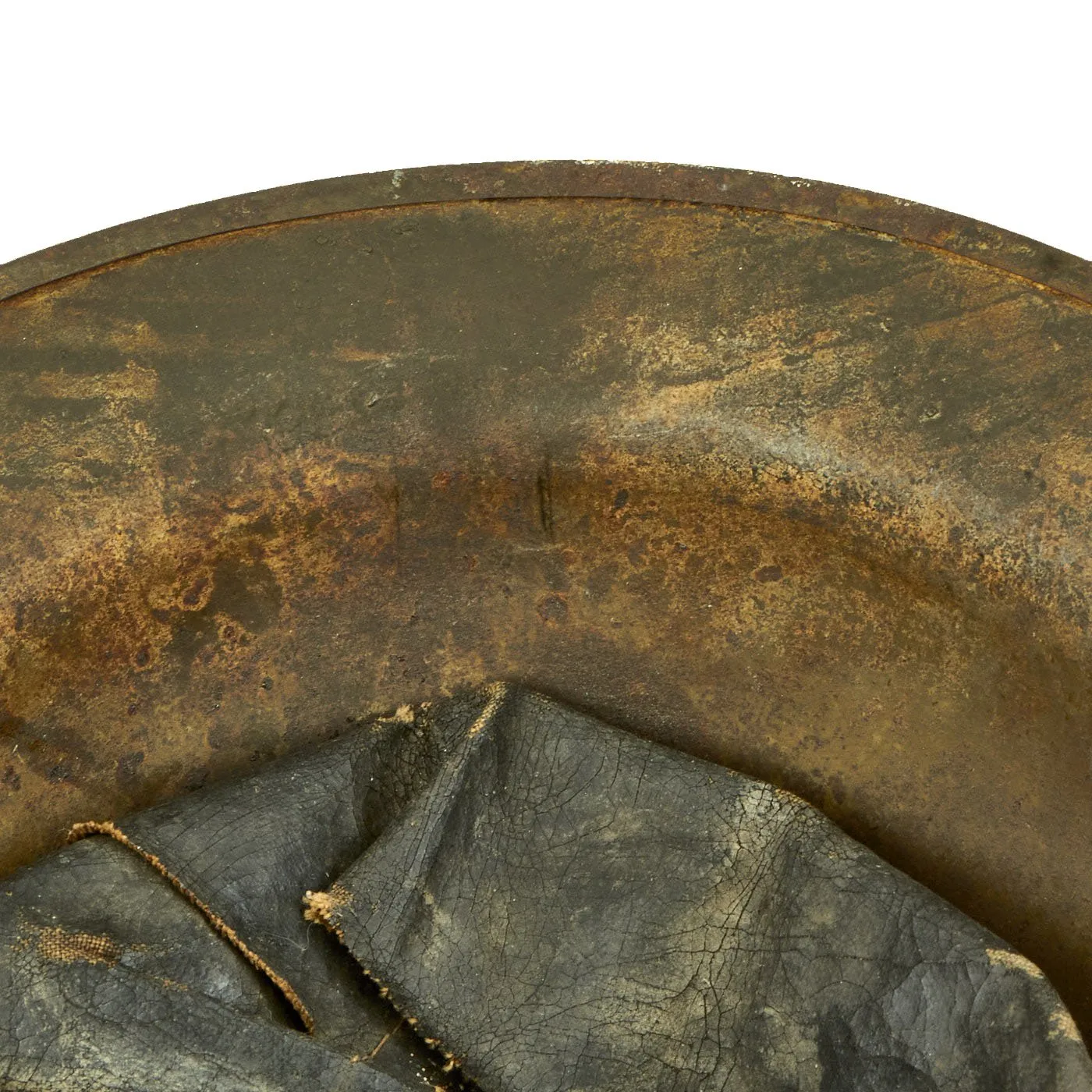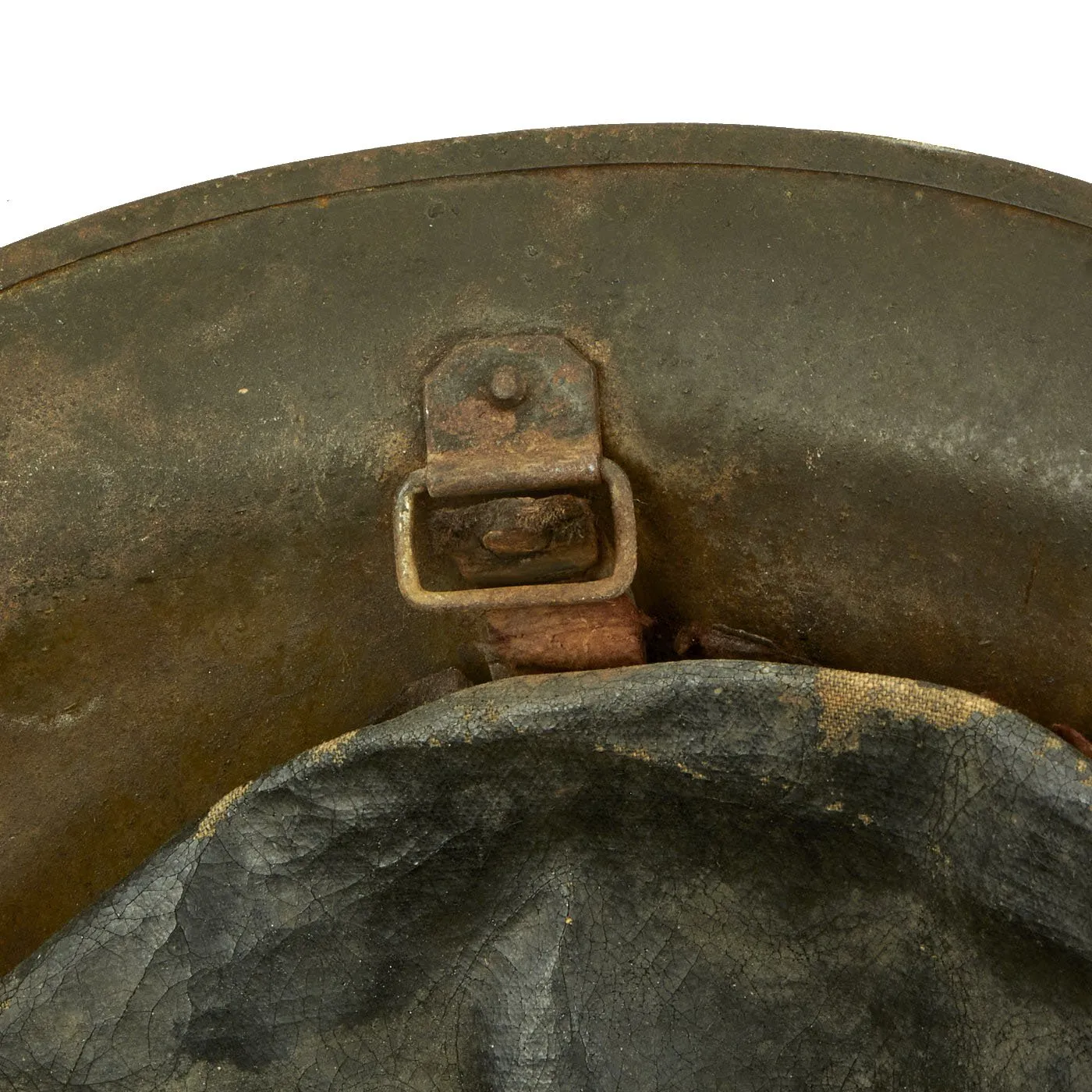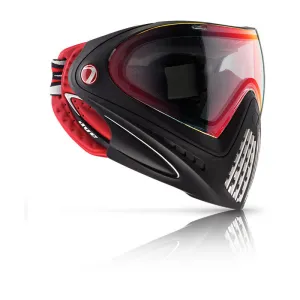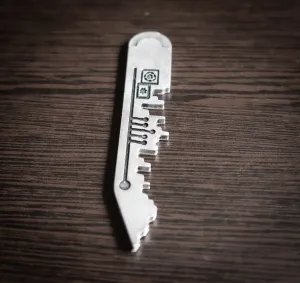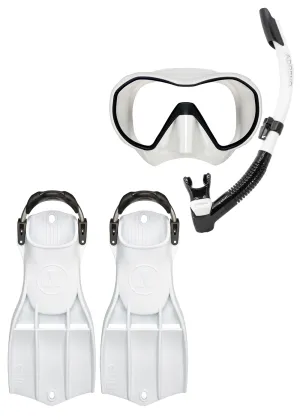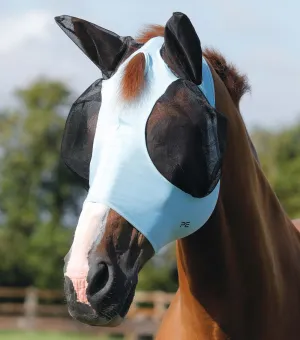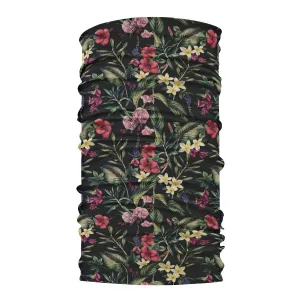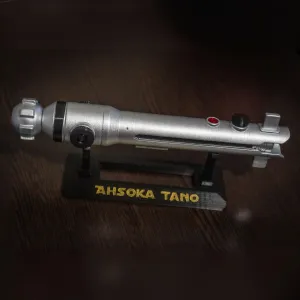Original Item: Only One Available. This is an extremely rare example of an original U.S. Marine Corps M1917 "Doughboy" helmet, which is marked on the front with a 3rd Battalion, 5th Marines, 2nd Infantry Division insignia. All U.S.M.C. WWI helmets are rare, but particularly those bearing specific unit insignia. It also has a very nice period colored panel camouflage paint job, with the helmet surface divided into four panels, colored brown, sky blue, pink, and green, all very popular colors for camouflage during WWI.
This very nice example is complete with a liner, though unfortunately the chin strap is completely missing. The shell is maker marked with a stamping on the underside of the rim that reads ZC 204. This maker marking indicates that this is a U.S. produced shell, which is further indicated by the solid rivets used to retain the chin strap bales. The outer shell still has 90% or more of the original camouflage finish, though the interior has faired a bit worse, with a lot of oxidation and dirt on the paint.
The best feature of this helmet is definitely the original hand painted 3rd Battalion 5th Marine Regiment, 2nd Infantry Division - Indianhead Division emblem in the center of the front of the helmet. Marines under this division used specific colors and shapes behind the "Indianhead" to designate which unit they were in, and the "blue square" indicates the 3rd battalion of the 5th Marine Regiment, part of the 4th Marine Brigade. The Unit Insignia maintains almost all of the original paint and remains bold and easy to see, though the blue is a bit dark, so it looks almost black under some lighting conditions.
The U.S. Marine Corps did not field divisional size units during WWI, so they were made part of the divisions of the U.S. Army. In fact, the entire 2nd Division was for a time during WWI commanded by U.S.M.C. Major General John A. Lejeune himself!
This is an wonderful RARE example of a genuine USMC Great War helmet, complete with divisional insignia, all original and ready to display!
More on the 2nd Infantry Division - Indianhead
The 2nd Division was first constituted on 21 September 1917 in the Regular Army. It was organized on 26 October 1917 at Bourmont, Haute Marne, France. At the time of its activation, the Indianhead Division was composed of the 3rd Infantry Brigade, which included the 9th Infantry Regiment; the 23rd Infantry Regiment and the 5th Machine Gun Battalion; the 4th Marine Brigade, which consisted of the 5th Marine Regiment, the 6th Marine Regiment and the 6th Machine Gun Battalion; 2nd Brigade of field artillery; and various supporting units. Twice during World War I the division was commanded by US Marine Corps generals, Brigadier General Charles A. Doyen and Major General John A. Lejeune (after whom the Marine Corps Camp in North Carolina is named), the only time in U.S. military history when Marine Corps officers commanded an Army division.
The division spent the winter of 1917–18 training with French and Scottish veterans. Though judged unprepared by French tacticians, the American Expeditionary Force (AEF) was committed to combat in the spring of 1918 in a desperate attempt to halt a German advance toward Paris. Major General Edward Mann Lewis Commanded the 3rd Brigade as they deployed to reinforce the battered French along the Paris to Metz road. The Division first fought at the Battle of Belleau Wood and contributed to shattering the four-year-old stalemate on the battlefield during the Château-Thierry campaign that followed.
On 28 July 1918, Marine Corps Major General Lejeune assumed command of the 2nd Division and remained in that capacity until August 1919, when the unit returned to the US. The division went on to win hard-fought victories at Soissons and Blanc Mont. Finally the Indianhead Division participated in the Meuse-Argonne Offensive which ended any German hope for victory. On 11 November 1918 the Armistice was declared, and the 2nd Division entered Germany, where it assumed occupation duties until April 1919. 2nd Division returned to U.S. in July 1919.
The 2nd Division was three times awarded the French Croix de guerre for gallantry under fire at Belleau Wood, Soissons, and Blanc Mont. This entitles current members of the division and of those regiments that were part of the division at that time (including the 5th and 6th Marine Regiments) to wear a special lanyard, or fourragère, in commemoration. The Navy authorized a special uniform change that allows hospital corpsmen assigned to 5th and 6th Marine Regiments to wear a shoulder strap on the left shoulder of their dress uniform so that the fourragère can be worn.
The division lost 1,964 (including USMC: 4,478) killed in action and 9,782 (including USMC: 17,752) wounded in action.
1st Battalion 5th Marines:
On 25 May 1917, the battalion was activated and deployed to France on 1 June 1917. 1/5 participated in the following World War I campaigns: Aisne, Aisen-Marne, St. Mihiel, Meuse-Argonne, Toulon-Troyon, Chateau-Thierry, Marabache, and Limey. 1/5 made its most notable contribution at the Battle of Belleau Wood on 6 June 1918, when it conducted the first offensive actions of the battle in seizing Hill 142. The battalion, at first with only two companies due to the other companies not being relieved in time, assaulted the open wheat fields of the hill with bayonets fixed under the fire of German machine gun and artillery fire. In a battle that claimed 325 1/5 lives, Gunnery Sergeant Ernest A. Janson became the first Marine to earn the Medal of Honor in World War I. From December 1918 to July 1919, the battalion participated in the occupation of the German Rhineland. It then re-deployed to Marine Corps Base Quantico, Virginia and de-activated in August 1919.
History of the M1917 Helmet:
The M1917 was the US Army's first modern combat helmet, used from 1917 and during the 1920s, before being replaced by the M1917A1. The M1917A1 helmet was an updated version of the M1917 and initially used refurbished WW1 shells.
The M1917 is a near identical version of the British MkI steel helmet, and it is important to note that when the US joined the Great War in 1917 they were initially issued with a supply of around 400,000 British made Mk.Is, before production began state side. The M1917 differed slightly in its lining detail, and exhibited US manufacture markings.
M1917 helmet liners typically show a paper label at the crown and the dome rivet head. The liner is set up as on the British versions, with an oilcloth band and net configuration, attached to a leather strap, riveted to the shell. The chinstrap is leather with steel buckle.





